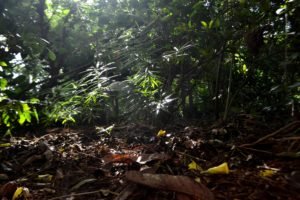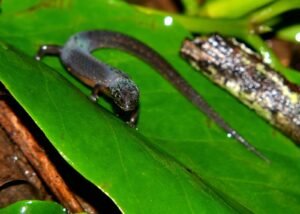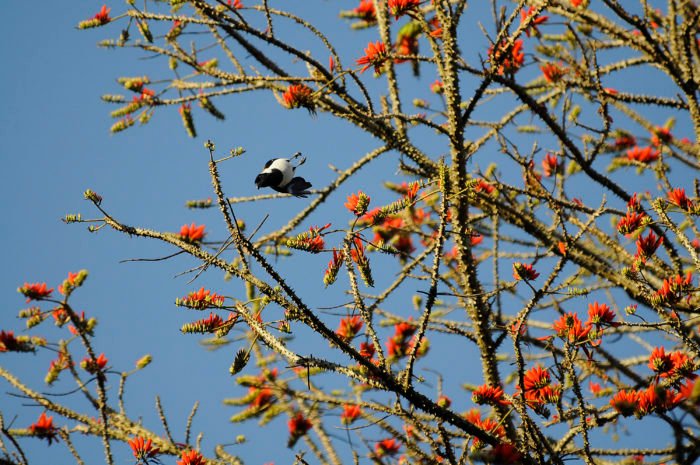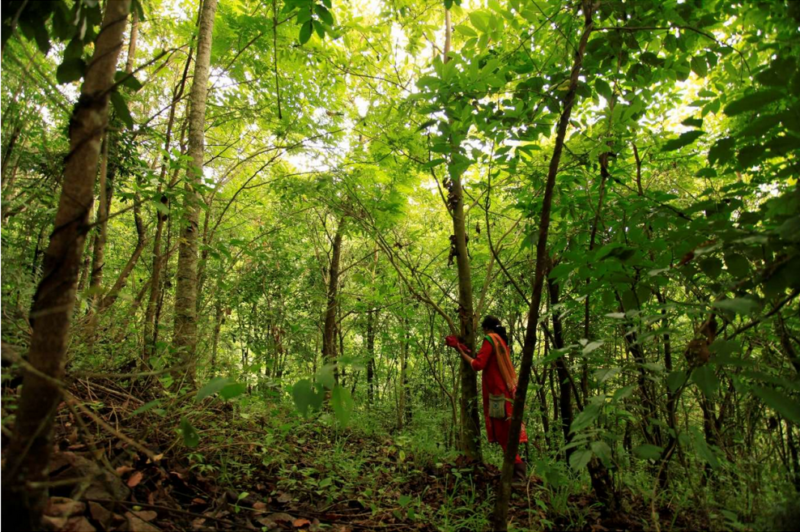
I believe forests to be entities that have their own intelligence. They have a system that has had millions of years to perfect itself and reach a point where every process and component both organic and inorganic has a part to play. We Humans however are prone to meddling, especially with those things that we do not fully understand. Forests have suffered greatly at our hands. In addition to chopping and hunting we have also introduced species that do not belong and removed things that do belong. One such thing is leaf litter
I have seen man made ‘forests’ and ‘gardens’ that have been completely cleared of their leaf litter. This is not done out of any malicious intent but out of ignorance and a flawed sense of aesthetics. It is easy to label leaf litter as something barren and lifeless. Indeed it is composed mainly of dead and decaying matter. I can tell you however, from experience that the leaf litter in a forest is one of the most exciting places.
To understand what I am talking about you simply have to find a patch of leaf litter and sit down quietly for a few minutes and listen. You might hear the sporadic rustle of a skink crawling through what I like to call reptilian expressways; passages and tunnels invisible to the human eye. You might hear the slow, slimy crackle of a snail sliding over the leaves. Or you might hear whispering footfalls of an army of marching black ants.

There are many that call this layer home. Millipedes, beetles, woodlice, slugs and worms are just a few. These creatures are detritivores and perform a vital role for the forest. They feed on dead biomass, breaking it down into smaller materials. Microbes and fungi then take this process forward breaking it down still further till finally you get what is called humus. Humus is the nutrient rich dark layer found bellow the leaf litter. Plants get their nutrients from this natural compost.
For some, the leaf litter is their hunting ground. If you take a walk in the forest in the early morning, you might sometimes see pea fowl or jungle fowl raking up the leaf litter in search of little critters to peck on. If you are really lucky you might even see the elusive Pitta that forages in leaf litter; flipping leaves with its beak in the hopes of surprising some hapless beetle or worm. Spiders also hunt here. Wolf spiders, who do not believe in building webs prowl through the leaf litter, actively stalking their prey just like their namesakes. I have often walked out at night with a head light and been treated to the light show created by spider eye shine reflected back at me as they crawl over the fallen leaves.
Some moth larvae descend from their host plants to pupate inside leaf litter. They knit little camouflage, tent like capsules which hide the vulnerable pupa from predators. Safe under the blanket of insulating leaves, some species may even pass into a state of hibernation emerging only after months. Another creature that makes use of the leaf litter’s insulating properties is the King cobra. It is the only snake known to build a nest, which resembles a deceptively normal pile of leaves inside which the eggs are laid.
Leaves and twigs spread around the base of plants are called mulch. Mulch, in addition to decomposing and turning into compost also protects the soil from harsh winds and sunlight, preventing moisture from escaping too quickly. The leaves also protect the soil from the effects of excess rain; slowing down runoff and reducing erosion. I have walked in areas where the leaf litter has been cleared and the effects are painful to see. Immediately after the rain the ground looks almost wounded with heavy gouges from erosion. And during a dry spell it can become cracked and parched.
So Leaf litter should definitely not be seen as something lifeless or useless. Its presence is crucial for the forests well being and also provides hours of pleasure for both casual and serious observers alike.
Sagar Nambiar
(About the author: Sagar is an aspiring writer and an avid nature enthusiast. He has a degree in Chemistry, Environmental Science and Zoology. He has been part of survey of amphibian diversity in aggro forests of Karnataka’s Western Ghats, conducted several awareness talks on identification of common snakes and role of reptiles in the ecosystem)






